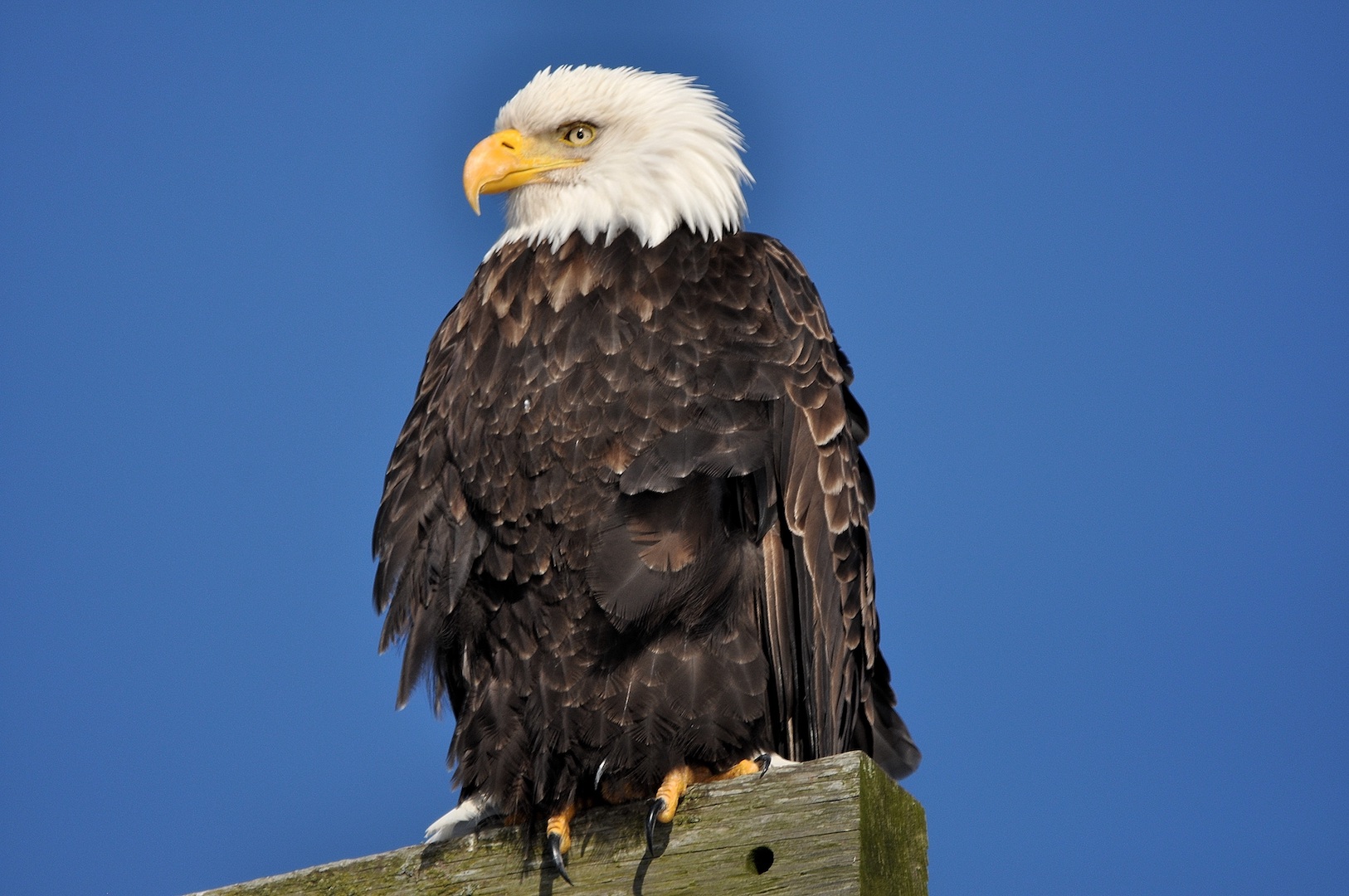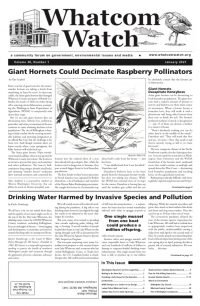by Joe Meche
After a tumultuous 2020, things can only get better in 2021 … at least that’s the hope of everyone on planet Earth. The Covid-19 pandemic dictated that we change our habits and canceled traditional gatherings for most of the big holidays. We were encouraged to wear masks and limit our activities away from home, so I wore a mask every day, as I have since March. My activities away from home are usually of the solo variety so I never felt that I was putting myself or anyone else at risk. The Bellingham Christmas Bird Count went on for another year, following guidelines set down by National Audubon to minimize spreader events and group activities.
Combining the state of the world with traditional winter weather in the Pacific Northwest, we have our hands full if we want to get out and see a few good birds. I’ve always said that the best cure for cabin fever is to get out of the cabin. For many of us winter, is the best time of year for birding. Understandably, the cabin is a very cozy place to be on the cold, wet days but the birds are waiting … outside!
While most birds tend to go their separate ways during the nesting season, flocking is the preferred course for some species in winter. The old adage of strength in numbers is appropriate along with the concept of birds of a feather sticking together. Large flocks of shorebirds and waterfowl are exciting for birdwatchers, no matter the level of expertise or time of year. These numbers are compiled in winter by citizen science efforts like the Christmas Bird Count and serve as useful data when tracking bird populations during the colder months.
Whatcom County’s reputation for winter birding is well founded, given the diversity of habitats and a moderate, mostly ice-free marine climate. Large concentrations of birds and highly accessible locations were instrumental in meeting the criteria established for the inclusion of several county sites in both the Important Bird Areas and Great Washington State Birding Trail programs. If you’re a casual or serious birdwatcher, you would be challenged to find a better place to bird, or live for that matter. The birds prove my point, every day!
As I’ve said before in this column, as well as in real life, waterfowl continue to be the leading reason for me to leave the cozy cabin on cold winter days. Under this broad heading are many of our resident birds, as well as the winter migrants that literally flood our landscape in the colder months. Loons, grebes, scoters, mergansers, sea and bay ducks, geese, and swans are easy to find in the right habitats well into April and early May. It’s somewhat miraculous to think of the distances these birds travel from their breeding grounds to winter with us. Long-tailed ducks remain one of the big attractions for birders to spend time at Semiahmoo. I know from first-hand experience.
Along with our most numerous and regular contingent of glaucous-winged gulls, we also have winter gulls that add to the ongoing gull ID challenge. Ring-billed and mew gulls are the most common visitors, along with the occasional herring, California, and Thayer’s gulls. Winter is a great time of year to compare individual gulls and become familiar with their seasonal plumages. The great thing about these aerialists is their high visibility on shorelines and estuaries, as well as in open areas of parks and agricultural fields throughout the lowlands.
Our great blue herons are with us year round and still provide excitement for all birdwatchers. They are familiar sightings everywhere and one of the most recognizable of all our birds. Part of their appeal, I believe, comes from the fact that they’re one of the first birds that most of us learned to ID with confidence. Their broad appetites pretty much guarantee that you can find them anyplace you go. When winter takes away the cover of leaves, walk down to the Post Point heronry and count the nests from last year.
The Semiahmoo Spit and the tidal flats at Marine Park in Blaine are perfect locations to view winter shorebirds like dunlin, our most numerous species. It’s not an exaggeration to estimate some of their flocks at between 10-15,000 individuals. Their synchronized flights are one of nature’s true marvels and generally occur when birds of prey are in pursuit. While you’re walking at Semiahmoo, scan the shorelines for sanderlings, black turnstones, and the inimitable black oystercatchers.
Given the dynamics of the individual species, birds of prey are the epitome of excitement wherever you find them. Bald eagle numbers peak on the Nooksack River in perfect synchrony with the winter run of chum salmon. When the salmon buffet winds down, these same eagles will head down to sea level to join other raptors in the open areas of the county. Red-tailed hawks are year round residents and are joined in winter by the Arctic-breeding rough-legged hawks. Adding to the numbers of wintering raptors are peregrine falcons, merlins, and American kestrels, as well as Cooper’s and sharp-shinned hawks. And don’t forget the owls! Be especially alert if you hear reports of snowy owls … we’re overdue for a visit from these magnificent Arctic owls.
Belted kingfishers and several species of woodpeckers make their homes here year round. Kingfishers are active birds in just about any watery habitat. Their distinctive, chattering calls never leave a doubt to their presence. Their calls are among the easiest for birders who practice birding by ear. Woodpeckers’ colors and their unique behavior make them one of our more entertaining groups of watchable wildlife, especially at suet feeders. Their frequent visits to feeding stations make them easy entries for a good day’s birding list. Anna’s hummingbirds stay with us throughout the year and benefit from humans who keep their feeders ice free on colder days.
The small passerines, or perching birds, are the true, easy to find entertainers of backyards and woodlots. An easy walk around your neighborhood or one of our many parks will offer a wealth of sparrows, finches, nuthatches, bushtits, and numerous other species. In winter, our common American robin is joined in the lowlands by other members of the same family, the hermit and varied thrushes. Spotted towhees, Bewick’s and Pacific wrens complement our resident black-capped and chestnut-backed chickadees in similar habitats.
If you plan to spend time in the field in the coming year, you might be wondering about where to go. As it turns out, there is a guide available for the entire county. Go to www.northcascadesaudubon.org and click on Locations under the Birding menu. The best sites are numbered and the attached list tells some of the species you might find at each one. The best idea is to print a copy and have it laminated to keep for future exploration. As we make our way into a new year, let’s hope that 2021 offers better days. As we change our calendars, let’s all resolve to start anew with a more sensible administration in the other Washington, and get a handle on our collective health.
Happy New Year from the crew at the Beaks and Bills HQ and stay healthy!
_______________________________
Joe Meche is a past president of the North Cascades Audubon Society and was a member of the board of directors for 20 years. He has been watching birds for more than 60 years and photographing birds and landscapes for more than 40 years. He has written over 200 columns for Whatcom Watch.





























